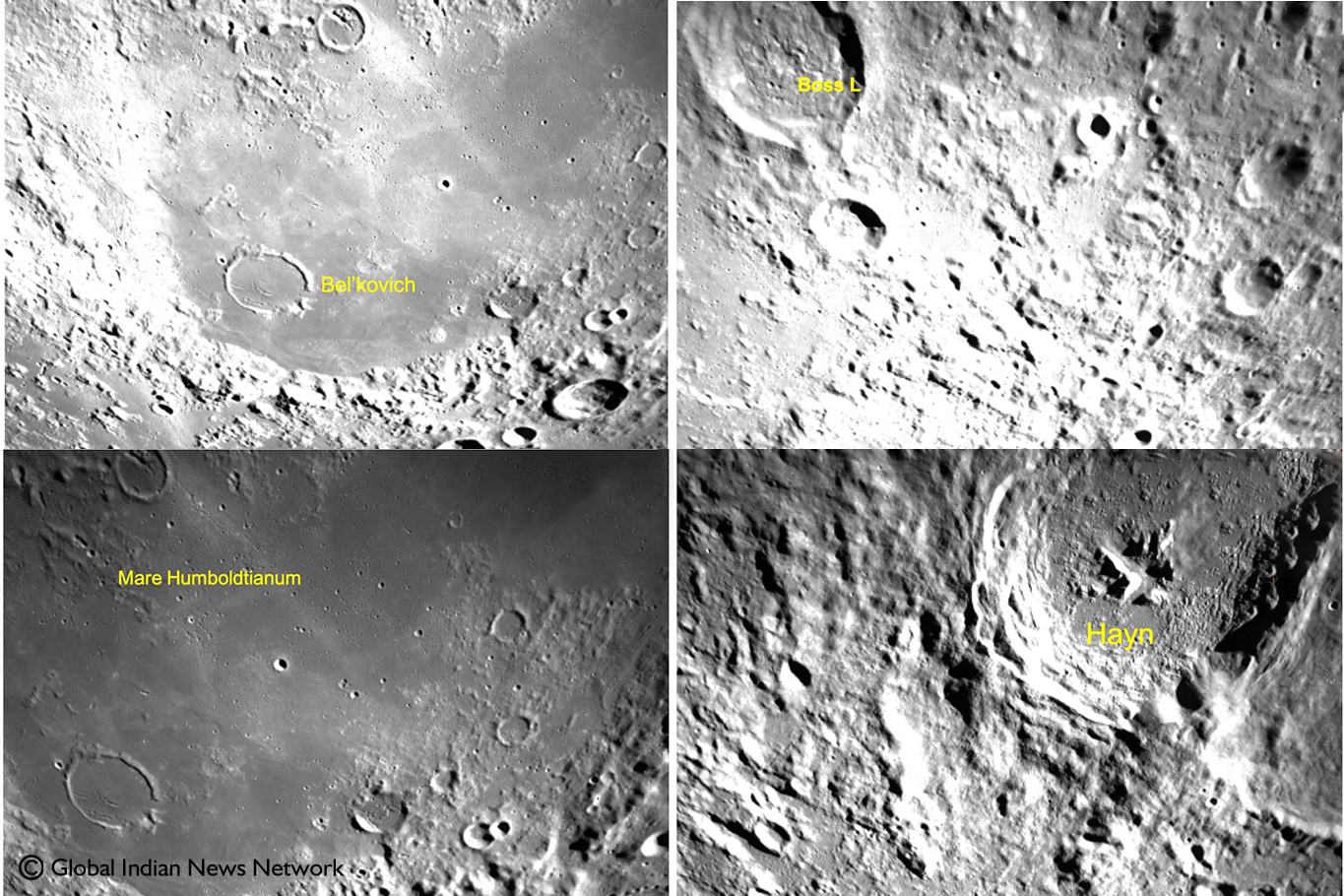 The most recent photographs of the Moon, taken by a camera located on the Chandrayaan-3 lander called Vikram, have successfully identified notable craters situated on the far side of the Lunar surface. This side is always hidden from Earth’s view due to the Moon’s synchronous rotation in orbit.
The most recent photographs of the Moon, taken by a camera located on the Chandrayaan-3 lander called Vikram, have successfully identified notable craters situated on the far side of the Lunar surface. This side is always hidden from Earth’s view due to the Moon’s synchronous rotation in orbit.
The primary purpose of the camera on Vikram is to aid in locating a secure landing site on the unexplored southern polar region of the Moon. It aims to ensure a safe landing area devoid of large rocks and deep craters.
The Indian Space Research Organisation (ISRO) shared, “We present images of the Lunar far side area, captured by the Lander Hazard Detection and Avoidance Camera (LHDAC). Crafted at SAC/ISRO, this camera aids in pinpointing a secure landing spot, devoid of rocks or trenches, as the craft descends.
The recent images, taken on the previous Saturday, have revealed the presence of craters such as Hayn, Boss L, Mare Humboldtianum, and Bel’kovich.
Scheduled to make history by landing in the southern polar region of the Moon, Vikram is set to touch down at 6:04 pm on Wednesday. This event would mark the first-ever landing in this specific area.
In contrast, Russia’s Luna-25 spacecraft, which was also aiming for a landing in the same southern polar region as Vikram, faced a tragic outcome. The Russian space agency, Roskosmos, reported that the spacecraft encountered a problem during pre-landing maneuvers and subsequently crashed into the Moon’s surface.
All attention is now directed towards India’s Chandrayaan-3 mission, which aims to achieve the unprecedented feat of landing on the Moon’s south pole. This mission will conduct various experiments over a two-week period, with a key focus on analyzing lunar soil and searching for water.
The successful execution of the Chandrayaan-3 mission would position India as the fourth country in the world, after the US, Russia, and China, to achieve a spacecraft landing on the Moon.
Following a triumphant landing, the ‘Vikram’ lander will deploy four scientific instruments to analyze the Moon’s surface temperature and explore its subsurface features. Additionally, the lander is equipped with an instrument named ‘Spectro-polarimetry of HAbitable Planet Earth’ (SHAPE), designed to collect data regarding light emission and reflection from Earth.
The ‘Pragyan’ rover, sporting six wheels, will embark on a 14-day exploration of the Moon’s surface, utilizing chemical tests. The rover is outfitted with multiple cameras to transmit images back to Earth and is powered by a solar panel for battery charging.












